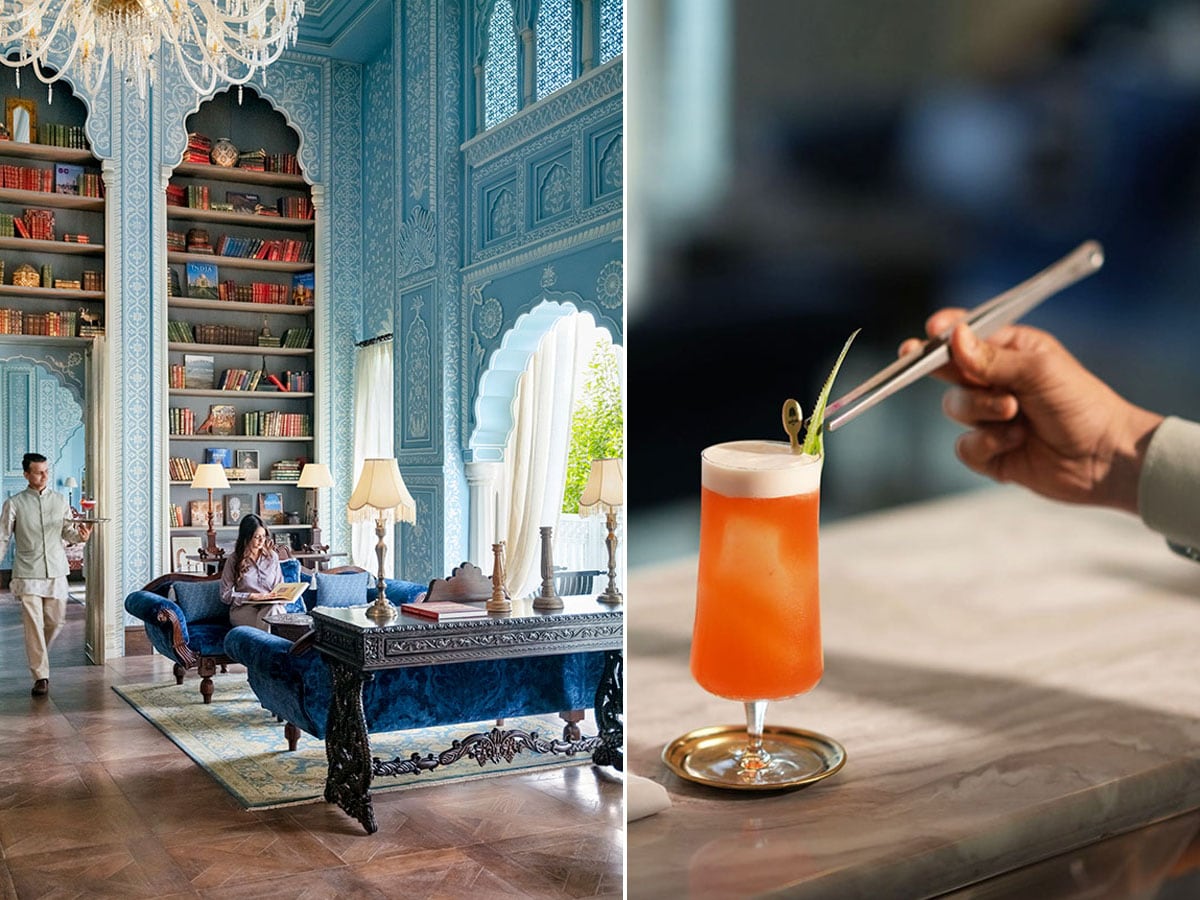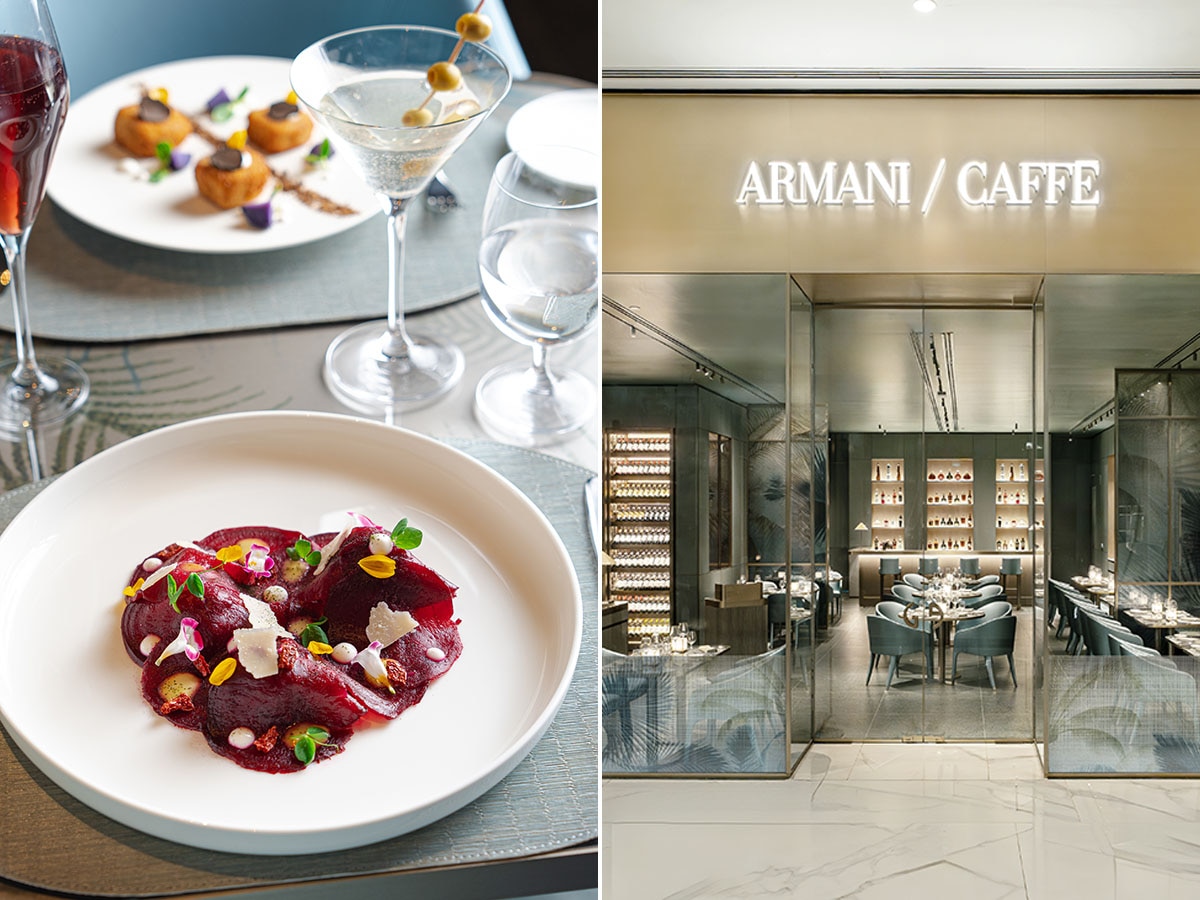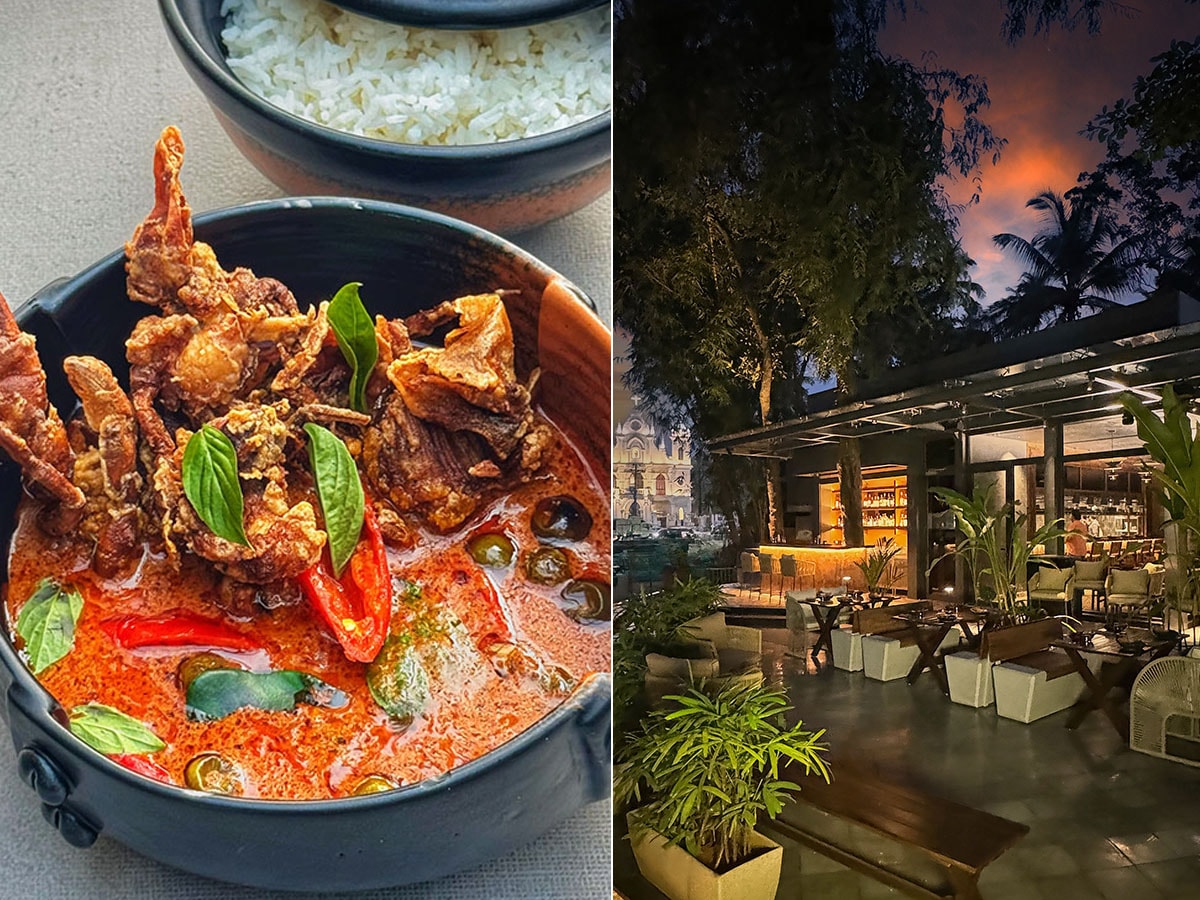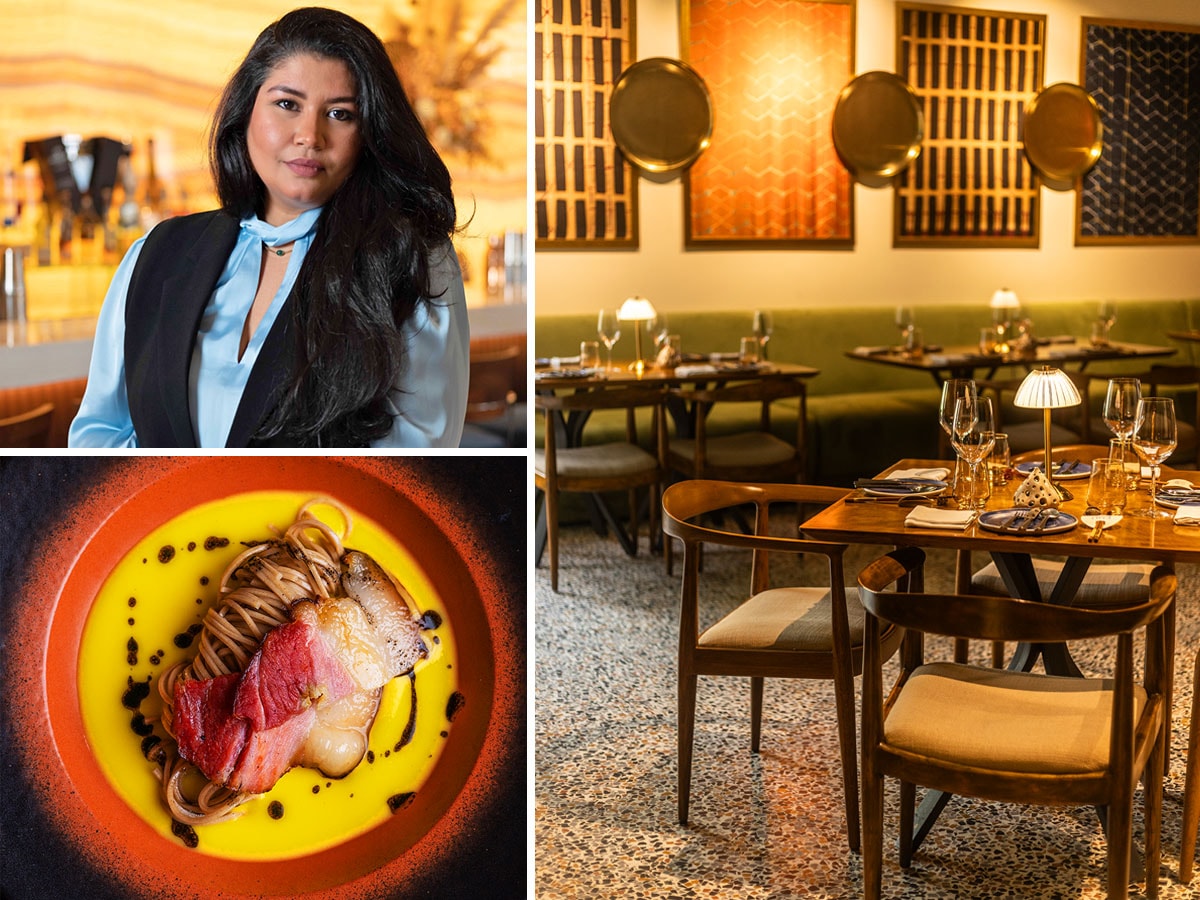Luxury food players bet big on India's appetite for fine things
Some of the world's most vaunted restaurants, bars and chefs are setting up outlets in the country as it becomes a hotspot for luxury dining and hospitality
 The Writers Bar at the Raffles Jaipur. The Jaipur Sling is flavoured with a dash of Chandrahaas liqueur.
The Writers Bar at the Raffles Jaipur. The Jaipur Sling is flavoured with a dash of Chandrahaas liqueur.
It is an unusually wet autumn in the desert. As we drive into Jaipur, the Pink City now turned green, it is an ideal rainy day to stay ensconced inside a palace—albeit a modern one—and read a tome or two about glories gone by.
Related stories
At the Writers Bar tucked inside the new Raffles hotel that has just opened in the city, designed like a “modern maharani’s” palace, the setting is just right for a day of leisure. Plush bound classics and coffee table books on princely India compete for attention with a showpiece of a bar, and a winding, old-fashioned staircase that takes you up to a tasteful wine library.
You sink into the art-deco couch, and begin to sip on a saffron-hued legacy liqueur from Rajasthan. Chandrahaas, the liqueur whose recipe goes back a few hundred years, was the exclusive elixir of the Katoch clan.
It is flavoured with saffron and about 50-odd herbs and spices, part of a royal tradition of liqueurs or distilled “asav” (flavoured spirits) that each of the Rajput thikanas specialised in. Chandrahaas is similar to the much-vaunted Kesar Kasturi of the Jodhpur royals, and a cousin of others like Jagmohan, Manmohan, Mawali et al made from different family recipes of each of the aristocratic clans tracing allegiance to the erstwhile major princely states of Mewar, Marwar, Amber/Jaipur and others. The liqueurs were served to guests as a symbol of hospitality and to ostensibly promote vitality and protect against the cold or heat of the desert.
At the historic Writers Bar that came up in the 19th century in Singapore, inspired by colonial men of literature such as Kipling and Conrad who visited the Straits, this touch of Indianism meets the inherent internationalism of the iconic bar.
Interestingly, we find a dash of chandrahaas also added to the Raffle’s best-known drink, the Singapore Sling—here, the Jaipur Sling—to sip on which throngs of tourists queue up daily at the Singapore hotel. In Jaipur, the French liqueur Benedictine (containing 20-plus herbs) part of the punch-like cocktail’s recipe has been substituted with the more complex Indian chandrahaas giving a delicious local twist to the classic.
While Raffles Jaipur’s quintessential definition of luxury includes the idea of European decadence such as champagne breakfasts in suite, butler service and bespoke menus and is in sync with the values of its parent company, the French major Accor, it is remarkable for another reason too. Rajasthan is the only geographical area where two Raffles have opened in relatively close proximity (the Raffles Udaipur opened in 2021), signalling the fact that foreign luxury hospitality players are betting big on India’s appetite for fine things.
While vaunted brands such as this are bringing in a sense of internationalism, India’s own traditions of luxury are also being rightfully entwined with the global aesthetic and taste.
 Armani Caffe at the Jio World Plaza in Mumbai with its wine selection on display. The Beetroot Carpaccio on the menu.
Armani Caffe at the Jio World Plaza in Mumbai with its wine selection on display. The Beetroot Carpaccio on the menu.
Also read: Manish Mehrotra and his 'modern-Indian' legacy
Silver platters, curated sips for India’s discerning
Unlike in the early 2000s, when a slew of international fast-food majors saw a big opportunity in India to cater to its middle class, post Covid, it is a consumption of global luxury that is on an upswing in India as compared to other markets in the world, which are seeing downward trends in the space.
This has resulted in the advent of top F&B and hospitality brands to the Indian market, in tie-ups with well-known and financially robust Indian investors and promoters.
Armani Caffe, for instance, the global super chic chain, known for its discerning patrons from Milan to Dubai, has just made its south Asia debut in Mumbai recently at the Jio World Plaza. It brings to the table the Armani aesthetic along with Italian gastronomy.
Food apart, the restaurant promises what is going to be perhaps the best selection of Italian wines in the country—not just the big labels but also niche regional selections. (The Italian wine culture is the most diverse in the world with a huge number of regional grape varieties and wine-making styles).
As the well-heeled Indian customers learn to sip and admire the differences between an elegant Barbaresco from Piedmonte and a high-powered Amarone della Valpolicella, it is important to also note that historically India has struggled with not just a lack of choice when it came to a wide variety of international wines thanks to high duties but also because the market seemed never quite to come of age when it came to wine.
A decade ago, as I had toured northern Italy—from Verona to Piedmonte, with a wine importer and a restaurateur-chef in tow, trying various regional wines to study what may suit the Indian market and palate, it had been deemed by the two businessmen by my side that the better quality, more elusive, and smaller labels would just not be commercially viable or acceptable in India. That has now changed with new aspiration and openness.
 A view of Fireback Goa. The Red Curry with soft-shell crab, ginger and lime eaves
Image: Rohit Chawla / Fireback
A view of Fireback Goa. The Red Curry with soft-shell crab, ginger and lime eaves
Image: Rohit Chawla / Fireback
Luxury companies expand the menu
A host of the world’s top F&B players, including Indian chefs and restaurateurs who have found success globally, are now looking to step into India, persuaded by the country’s own robust entrepreneurship in this sector.
Impresario Handmade Restaurants’ Riyaz Amlani, one of India’s most successful restaurateurs, is likely to bring chef Garima Arora (whose restaurant Gaa in Bangkok has been on the 50 Best List and has a two Michelin Star rating) to India for a premium concept soon. The space for the concept has been finalised in Gurugram’s posh Two Horizon Centre and an announcement with details on what’s on the anvil expected in a week.
Top restaurateur Rohit Khattar has already brought in globally acclaimed Thai chef and expert David Thompson to Goa with Fireback, his modern Thai restaurant. This is all set to expand to other Indian cities such as Hyderabad in the near future.
And Bhupender Nath, the low key but extremely innovative entrepreneur building what is perhaps the best Indian restaurant company when it comes to its talent pool of chefs, is expanding his presence in India. His restaurant Carnival is set to open in Goa soon. Nath has chefs like Himanshu Saini, Sarfaraz Ahmed, Rahul Rana and Sanket Joshi handling brands like Tres Ind Studio (no. 13 on the world’s 50 Best List), Tres Ind and Avatara in Dubai and Mumbai.
Amongst the most iconic of these homecomings for top Indian restaurateurs abroad is that of Panchali Mahendra, CEO of Atelier House Hospitality that owns the Michelin-starred 11 Woodfire and a slew of other brands in Dubai, as she redoes the entire food and beverage programme at Mumbai’s Intercontinental Marine Drive in the next few months. Mahendra, who had opened two restaurants in Delhi last year (Inja, an Indian Japanese fine dine and Camillo’s, an Italian concept) has just signed a development and management deal with the legacy hotel, under which she is bringing four new restaurants to Maximum City.
Atelier House Hospitality is in fact investing close to $2-3 million in restaurants in India over the next one-two years, Mahendra says, with expansion not just in Mumbai, and Gurugram where a modern south Indian restaurant with a speakeasy bar is on the anvil in 2025, “at another iconic location”, but also in Hyderabad, Pune and Lucknow.
“Being an Indian, I always wanted to come to India…” she explains, adding that “most international companies are now looking at India because of its economy, spending power and the kind of dining experiences people are seeking post Covid. To be honest, a lot of markets are saturated internationally. Everyone wants to expand and they are looking at India,” she says.
 Panchali Mahendra CEO of Atelier House Hospitality introduced the world’s first Indian-Japanese fusion restaurant Inja in New Delhi.
Panchali Mahendra CEO of Atelier House Hospitality introduced the world’s first Indian-Japanese fusion restaurant Inja in New Delhi.
Global, tailored to India
The fact that Indians are spending on high quality and high priced food and beverage experiences around the world even as consumption has stalled in many “mature” markets means that the world’s best are looking for opportunities here. The world’s top modern Thai chef Thitid Tassanakajohn (chef Tonn, as he is popularly called) in fact had mentioned to me some time ago about how he had been noticing the increasing presence of discerning Indian customers at his restaurants in Bangkok and would not be averse to coming to India if a suitable opportunity arose.
Chefs like the celebrated Gordon Ramsay have partnered with local players (in this case Travel Food Services) to bring their restaurant empire to India. Ramsay’s four concepts (albeit aimed at the more mass market) will be visible across Indian airports under a three-year opening programme which sees six restaurants opening by 2027.
But while Indian food fans can sit back and look forward to these new and celebrated offerings, Ramit Mittal, who brought in PF Chang to India in early 2024, says, “The single most important thing for any foreign brand eyeing the Indian market is flexibility to make the brand relevant to the people of India. For a brand to be successful, it needs to be an international brand for India vs an international brand in India.”
The iconic American-Chinese brand is doing well despite similar products in the market because of such customisation, says Mittal, whose PF Chang has three outlets in India at the moment with a Mumbai opening slated for January.
It's an early lesson that many looking to India’s burgeoning appetite for fine foods and experiences may imbibe.

















